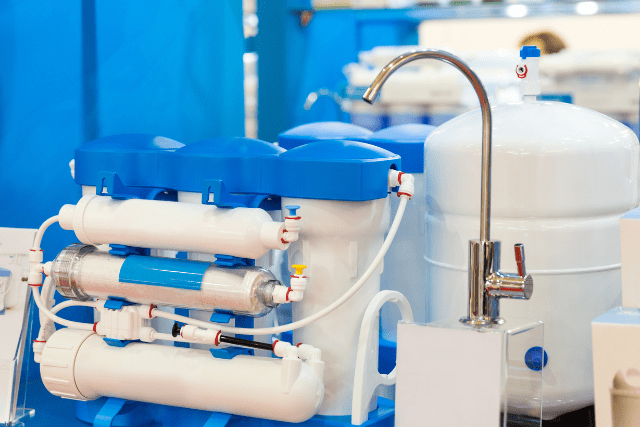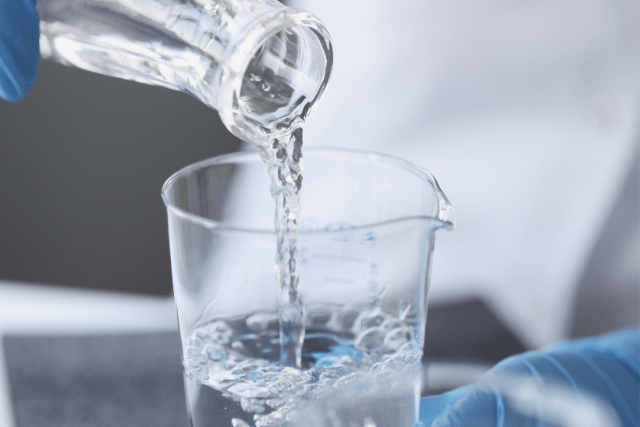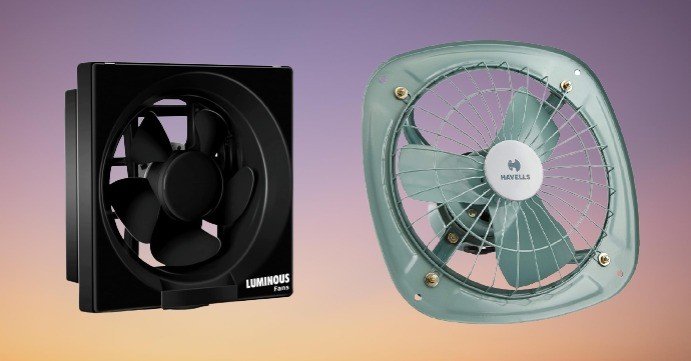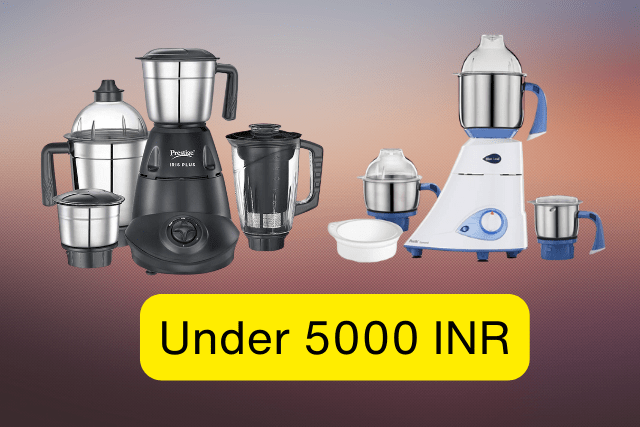Don’t let common Water Purification Myths cloud your judgment on water purification. Keep reading for scientifically-backed information on safe drinking water.
Introduction
Water purification is essential to daily life, ensuring our families access to safe and clean drinking water. However, several myths surround the topic, leading to misconceptions about the best methods for obtaining purified water.
In this blog post, we will debunk common water purification myths and provide accurate information backed by scientific evidence to help guide your choices correctly.
Key Takeaways
- Boiling water alone cannot thoroughly purify it as it cannot remove all contaminants. Certified filtration systems that use multiple methods, such as activated carbon filters and reverse osmosis membranes, are a more comprehensive approach.
- Bottled water is not always the safest option for drinking, and investing in a reliable home filtration system can save money on bottled water purchases while guaranteeing safety.
- Understanding the types of contaminants present in water and selecting the correct purification method for individual needs is crucial. No single method can remove all contaminants, so regular maintenance and periodic testing are necessary to ensure safe, clean, and healthy water.
Common Myths About Water Purification
Boiling water is often considered a sufficient method for purifying it, while bottled water is considered the safest option; however, these are just two of the many common myths surrounding water purification.
Myth 1: Boiling Water Is Enough To Purify It
One common water purification myth is that boiling water alone will effectively remove all harmful contaminants, making it safe for consumption. Although boiling can kill many bacteria and viruses, this method falls short when addressing other impurities, such as chemicals, heavy metals, and dissolved solids.
Furthermore, relying on boiling as your primary means of purifying water also presents practical challenges. The process requires constant vigilance to avoid potential accidents or over-boiling, which wastes time and energy.
Myth 2: Bottled Water Is Always The Safest Option
Many people believe that bottled water is the safest option for drinking. However, this is not always true. Bottled water can be contaminated during production and transportation or contain chemicals from the plastic bottle.
Moreover, repeatedly buying bottled water can add up to a significant cost.
Myth 3: All Water Filters Are Effective
One common misconception about water purification is that all water filters are effective and provide healthy drinking water. This is far from the truth, as not all water filters can remove every type of contaminant.
For example, activated carbon filters greatly remove chlorine taste and odors but do little to eliminate bacteria and viruses.
Understanding which contaminants must be removed from your drinking water before choosing a filtration system is crucial. Ensuring you select the correct filter will effectively address your unique concerns while maintaining healthy minerals in your final product.
Myth 4: UV Light Is The Best Water Purification Method
Many believe UV light is the best water purification method, but this is untrue. While UV light can effectively kill bacteria and viruses, it does not remove other contaminants such as lead, chlorine, or volatile organic compounds (VOCs) that may be present in the water.
It’s important to note that while UV lights can effectively kill harmful organisms like E.coli and hepatitis A, they cannot remove sediments or chemicals like pesticides from the water.

Risks Of Unpurified Water
Contaminated water can lead to serious health hazards, including gastrointestinal illnesses, kidney damage, and cancer.
Health Hazards Associated With Contaminated Water
Contaminated water is a major health hazard that can cause numerous illnesses and diseases. Harmful microorganisms such as bacteria, viruses, and parasites can spread through contaminated water and cause serious health problems like diarrhea, cholera, typhoid fever, and hepatitis A.
Chemical contaminants in drinking water could also pose significant health risks if consumed over extended periods.
It’s essential to ensure proper purification of your drinking water, whether it comes from a municipal source or private well since even treated city water might contain contaminants that could be harmful.
Importance of Purified Water
Drinking improperly purified water can lead to severe health hazards, including illnesses caused by bacteria and viruses. Properly purified water removes contaminants like lead and pesticides that can cause long-term damage to the body, especially if consumed over an extended period.
Additionally, contaminants, such as chlorine used in city water treatment facilities, may hurt skin and hair when showering or bathing.
Good water purification is essential for maintaining good health and avoiding potential risks of contaminated drinking water.
The Science of Water Purification
Understanding the different types of contaminants present in water is crucial in determining the most effective purification method, as each type of contaminant requires a specific treatment process.
Understanding Different Types Of Contaminants In Water
Water can contain various types of contaminants that are harmful to human health. Understanding these contaminants is essential to purify water properly. Here are some of the common types of contaminants that can be found in water:
- Bacteria – These microorganisms can cause diarrhea, cholera, and typhoid fever.
- Viruses – Like bacteria, viruses can also cause diseases like hepatitis A, polio, and rotavirus.
- Heavy metals – Contaminants like lead, mercury, cadmium, and arsenic can cause long-term health problems such as neurological damage and cancer.
- Chemicals – Pesticides, herbicides, and industrial chemicals can enter water sources and adversely affect human health.
- Sediments – Dirt particles, sand, and other suspended solids reduce the quality of drinking water by making it appear cloudy or dirty.
- Chlorine – While chlorine is added to city water supplies to disinfect it from bacteria and viruses, it is a chemical that could have harmful effects if consumed excessively over an extended period.
Choosing a water purification method based on the specific contaminants present in one’s water source is essential for the best purification results.
Also Read: Ever wonder what’s really in your water? Check the TDS level at home

Effects Of Different Purification Methods
The table below summarises some common purification methods and their effects on water quality.
| Purification Method | Effectiveness | Contaminants Removed | Mineral Retention |
| Boiling | Limited | Pathogens (bacteria, viruses, parasites) | Does not remove essential minerals |
| Activated Carbon Filters | Good | Chlorine, organic compounds, sediment, taste, and odor | Does not remove essential minerals |
| Reverse Osmosis | Excellent | Heavy metals, dissolved salts, bacteria, and some viruses | Can remove some essential minerals |
| Ultraviolet (UV) Light | Very Effective | Pathogens (bacteria, viruses, parasites) | Does not remove essential minerals |
| Distillation | Very Effective | Heavy metals, dissolved salts, and most organic compounds | It can remove some essential minerals |
| Ion Exchange | Good | Heavy metals, nitrates, and dissolved salts | It can remove some essential minerals |
Keep in mind that no single purification method can remove all contaminants. Understanding your specific water quality concerns and choosing a system that addresses those concerns effectively is essential. Regular maintenance of your water filtration system and periodic water quality testing will help ensure you and your family enjoy safe, clean, and healthy water.
Importance Of Choosing The Right Method For Individual Needs
When it comes to water purification, choosing the right method for your needs is crucial. Not all contaminants are need to be dealt the same way, so understanding what’s in your water is a necessary first step.
For example, UV light might be the best option if you live in an area with high bacteria or microorganisms.
When selecting a purification method, it’s also important to consider factors such as cost-effectiveness and environmental impact. While off-the-shelf filters may seem cheaper upfront, they may not effectively remove all contaminants from your water, resulting in higher costs.
Ultimately, choosing the right water purification method comes down to understanding your unique needs and researching options to find the best for you.
Debunking Water Purification Myths
We will explain why each water purification myth is false and provide alternative options for effective water purification.
Explanation Of Why Each Myth Is False
- Myth 1: Boiling Water is Enough to Purify it
- While boiling water can kill some bacteria and viruses, it does not remove all contaminants, such as chemicals or heavy metals, that cannot be boiled away. Additionally, boiling water does not filter out sediment or debris.
- Myth 2: Bottled Water is Always the Safest Option
- Bottled water is not necessarily safer than tap water since it may be subject to the same types of contamination as tap water. Furthermore, bottled water can be expensive and creates unnecessary plastic waste that harms the environment.
- Myth 3: All Water Filters are Effective
- Not all water filters are created equal, and off-the-shelf filters may not effectively remove specific contaminants like bacteria or lead. Certified filtration systems are more reliable and can remove more pollutants from your drinking water.
- Myth 4: UV Light is the Best Water Purification Method
- While UV light can destroy certain types of bacteria and viruses, it may not be effective against all types of contaminants in water. Understanding the impurities you must remove from your drinking water is essential before selecting a purification method.
Remember that different myths about water purification persist in society, but understanding the facts behind each myth ensures that you make informed choices about water safety.
Alternative Options For Effective Water Purification
Regarding purifying water, several options are available beyond the common myths. Here are some effective alternatives:
- Reverse Osmosis: This process uses a semi-permeable membrane to remove impurities and contaminants from water.
- Carbon Filters: These filters use activated carbon to remove chlorine, pesticides, and other chemicals from water.
- UV Water Purifiers: These devices use ultraviolet rays to kill bacteria, viruses, and other microorganisms in water.
- Ion Exchange Filters: These filters remove calcium and magnesium that cause hard water while adding healthy minerals like potassium.
- Distillation: This process involves boiling water and then collecting the steam, leaving any impurities or contaminants behind.
Remember that different methods of purification work best for different types of contaminants in your area’s water supply. So always research before choosing a filtration system or method to ensure it meets your needs effectively.

Ensuring Proper Water Purification
To ensure proper water purification, it’s important to use certified water filtration systems and follow the manufacturer’s instructions for maintenance.
Use Certified Water Filtration Systems
Choosing a certified water filtration system is crucial for ensuring proper water purification. Certified systems have been tested and proven to remove specific contaminants, such as chlorine, lead, and other harmful particles, from your drinking water.
It’s important to note that not all water filters are created equally and may not effectively remove all contaminants. Inexpensive off-the-shelf models may claim to purify your water but fail to address certain quality concerns, such as bacteria.
Follow the Manufacturer’s Instructions For Maintenance
To ensure proper water purification, following the manufacturer’s instructions for maintenance is essential. Each system is unique and requires specific upkeep to function correctly.
Neglecting regular maintenance can decrease water quality, efficiency, or even system failure. For example, not changing the filter regularly can cause harmful contaminants like bacteria to remain in the water supply.
By following manufacturer instructions for maintenance, users can prolong their systems’ lifespan and maintain high-quality purified water consistently.
Periodically Test Water Quality
It’s essential to test the quality of your water periodically, even if you have a water filtration or purification system in place. This is because your water source could change over time due to natural disasters, infrastructure changes, and aging pipes.
For example, suppose you live where heavy metals are prevalent in the soil or groundwater. In that case, periodic testing can alert you if these toxins are seeping into your drinking supply.
Testing can also detect whether chlorine levels are too high in city-supplied tap water.
Keeping track of what’s in your water is crucial for maintaining good health overall.
Also Read: 10 Best Water Purifiers in India: Buyer’s Guide and Reviews
Conclusion: The Importance Of Understanding The Truth About Water Purification
In conclusion, it’s essential to debunk common myths about water purification to make informed decisions when choosing the right method for individual needs. Boiling water is not enough to purify it, and bottled water is not always the safest option.
Not all filters are effective, and UV light may not be the best purification method. Understanding different types of contaminants in water and choosing the right purification method that suits individual needs is crucial.
Follow the manufacturer’s instructions for maintenance, use certified filtration systems, and periodically test water quality to ensure proper purification.
Frequently Asked Questions (FAQs)
What are some common myths about water purification in India?
There are many myths about water purification out there. Some of the most common ones include:
- Myth: Boiling water is enough to make it safe to drink.
- Myth: Water purifiers are expensive and unnecessary.
- Myth: All drinking water is the same.
- Myth: Water purification removes all impurities from the water.
- Myth: Water filtration and purification are the same thing.
It is important to distinguish between fact and fiction regarding water purification. Ensuring access to clean drinking water is essential to your health and well-being.
What is reverse osmosis (RO) water purifier?
A reverse osmosis water purifier is a type of water filtration system that removes impurities from water using a semi-permeable membrane. This system uses pressure to force water through the membrane, which traps impurities such as bacteria, viruses, and minerals, leaving pure water on the other side. RO water is considered one of the best options for clean water.
How do I ensure that the water I am drinking is safe?
A water purification system is the best way to ensure access to safe drinking water. Many different types of systems are available, including reverse osmosis, activated carbon, and distillation. Be sure to do your research and choose a system that is appropriate for your needs. Additionally, it is important to pay attention to the source of your water, whether it comes from a municipal supply or a private well.
What is the difference between bottled water and purified water?
Bottled water can come from various sources, including municipal supplies, springs, and wells. While some bottled water is purified, not all of it is. It is essential to read labels carefully to determine the source and treatment of the water if you are choosing to drink bottled water. On the other hand, purified water has undergone a specific treatment process to remove impurities. This type of water may come from a variety of sources, but
What is one most common water purification myth that needs to be debunked?
One common misconception is that boiling water alone can purify it completely, when in fact, boiling only kills bacteria and viruses but does not remove other harmful contaminants such as chemicals or heavy metals.
Should I buy expensive water filtration systems for safe drinking water?
Not necessarily. There are affordable options like activated carbon filters that effectively remove chemicals and improve the taste and odour of tap water. Researching and choosing a filter model that meets your specific needs is essential.
Is bottled water always safer than tap water?
Not necessarily. The FDA regulates bottled waters, while municipal tap waters undergo regular testing from the EPA, which has more stringent regulations in some cases; moreover, plastic bottles produce large amounts of waste, which can harm the environment if not recycled properly, so opting for filtered tap over bottled products could help reduce both health risks & environmental impact at once.
Does alkaline or ionized water have added health benefits compared to regular drinking water?
There is no scientific evidence supporting these claims;. At the same time, some individuals may prefer the taste of alkaline or ionized waters, there appears to be little difference nutritionally between them when it comes to comparing consumption volumes against daily essentials required by the human body, e.g., vitamins & minerals.







